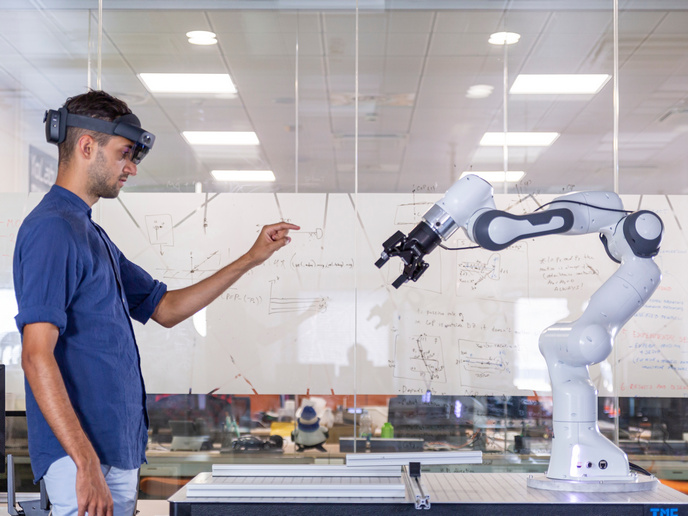New generation of collaborative robots transforms manufacturing processes
Robotic arms in production environments are already powerful tools for tasks like welding, painting and assembly. But how can robots work more closely with humans to improve productivity, efficiency and safety? The EU-funded SOPHIA project tackled this challenge by developing socially cooperative human-robot systems to improve workplace ergonomics and productivity in agile manufacturing environments.
Innovative human-robot interaction
Collaborative robots (cobots) are common in European factories, but SOPHIA addressed a new dimension: physical human-robot interaction (pHRI). Existing cobots are designed to work safely alongside humans by responding to environmental changes. SOPHIA advanced this by enabling robots to sense and respond to workers’ physical (and indirectly, mental) states, improving both productivity and well-being. “This more integrated approach significantly enhances both ergonomics and productivity in hybrid work environments,” explains Arash Ajoudani, coordinator of the SOPHIA project. The project introduced fellow-feeling wearables, designed to monitor workers’ physical conditions and guide them toward safer working postures. Additionally, fellow-assistant robots assist with load-bearing tasks to reduce strain. “These wearable systems, combined with reconfigurable cobots, optimise workflows by responding to worker intentions in real-time,” says Ajoudani. This innovative approach makes the work environment not only more efficient but also safer and more adaptable.
Key results from real-world environments
At Hidria, a Slovenian manufacturer, SOPHIA’s cobots reduced workers’ load by 80 % while increasing productivity by 40 %. In Volkswagen’s assembly line in Zwickau, cobots assisting with repetitive tasks improved worker ergonomics by 25 %. Hankamp Gears, a Dutch SME, saw ergonomic strain reduced by 59 % with mobile cobots assisting workers in heavy parts handling. These results demonstrated the practical impact of SOPHIA’s technologies in real-world production environments with improvements in safety and productivity. However, challenges, such as balancing cobot speed and payload with safety, remain areas for further development.
Improving ergonomics and trust in automation
SOPHIA took a unique approach to improving human ergonomics by measuring a worker’s physical and metabolic energy costs. This system detects fatigue, overloading and other ergonomic risks, helping workers adjust their postures and movements to avoid injury. The observatory layer tracks metrics like muscle activation and joint load to create safer working conditions. It also forecasts risks using machine learning, guiding workers toward optimal ergonomic postures. These insights are integrated into the decision-making systems of fellow-assistant robots, ensuring intuitive interactions that improve worker safety. “This system helps detect body overstretching and overloading, while identifying tasks that demand abnormal metabolic energy,” adds Ajoudani, discussing how SOPHIA reduces the risk of injury while improving trust in automation. By addressing these risks and adapting in real-time, SOPHIA increases workers’ trust in automation, leading to better collaboration between humans and machines.
Standardising human-robot collaboration
SOPHIA’s impact goes beyond technology development. The project also contributed to standardisation efforts within the European manufacturing sector. A European Committee for Standardization (CEN) Workshop Agreement (CWA 17938) was developed for biomechanical risk assessment, filling gaps in existing standards. SOPHIA also engaged with international standardisation bodies, such as ISO and ETSI, to ensure its technologies align with industry standards for safe human-robot interactions. By advancing both technology and standardisation, SOPHIA is helping ensure that human-robot collaboration becomes the norm in European manufacturing, driving resource efficiency, safety and productivity. While challenges remain, such as optimising cobot speed and handling, the project’s contributions have laid a solid foundation for safer, more efficient work environments.
Keywords
SOPHIA, cobots, ergonomics, human-robot collaboration, automation, fellow-assistant robots



